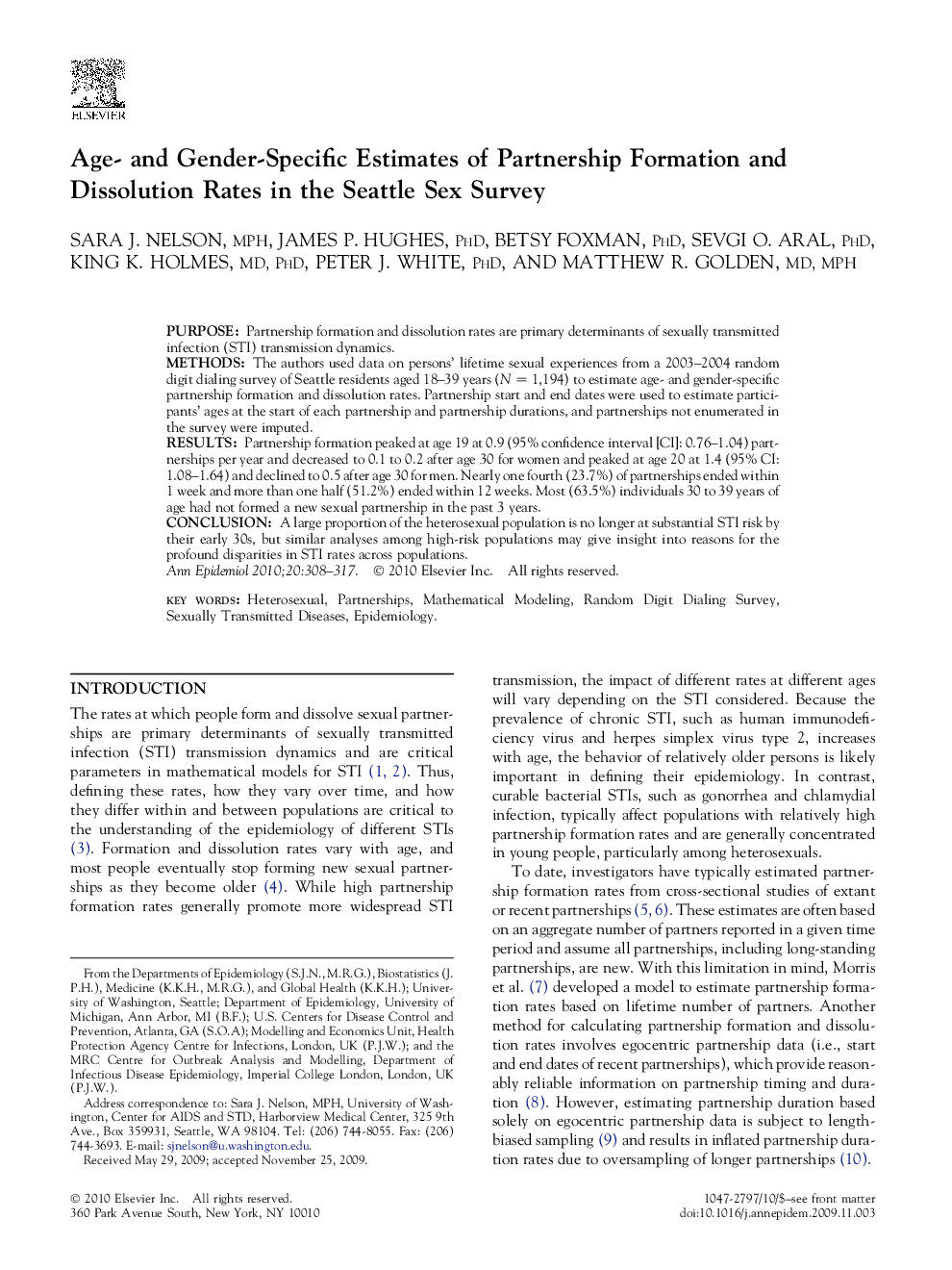| Article ID | Journal | Published Year | Pages | File Type |
|---|---|---|---|---|
| 3444715 | Annals of Epidemiology | 2010 | 10 Pages |
PurposePartnership formation and dissolution rates are primary determinants of sexually transmitted infection (STI) transmission dynamics.MethodsThe authors used data on persons' lifetime sexual experiences from a 2003–2004 random digit dialing survey of Seattle residents aged 18–39 years (N = 1,194) to estimate age- and gender-specific partnership formation and dissolution rates. Partnership start and end dates were used to estimate participants' ages at the start of each partnership and partnership durations, and partnerships not enumerated in the survey were imputed.ResultsPartnership formation peaked at age 19 at 0.9 (95% confidence interval [CI]: 0.76–1.04) partnerships per year and decreased to 0.1 to 0.2 after age 30 for women and peaked at age 20 at 1.4 (95% CI: 1.08–1.64) and declined to 0.5 after age 30 for men. Nearly one fourth (23.7%) of partnerships ended within 1 week and more than one half (51.2%) ended within 12 weeks. Most (63.5%) individuals 30 to 39 years of age had not formed a new sexual partnership in the past 3 years.ConclusionA large proportion of the heterosexual population is no longer at substantial STI risk by their early 30s, but similar analyses among high-risk populations may give insight into reasons for the profound disparities in STI rates across populations.
